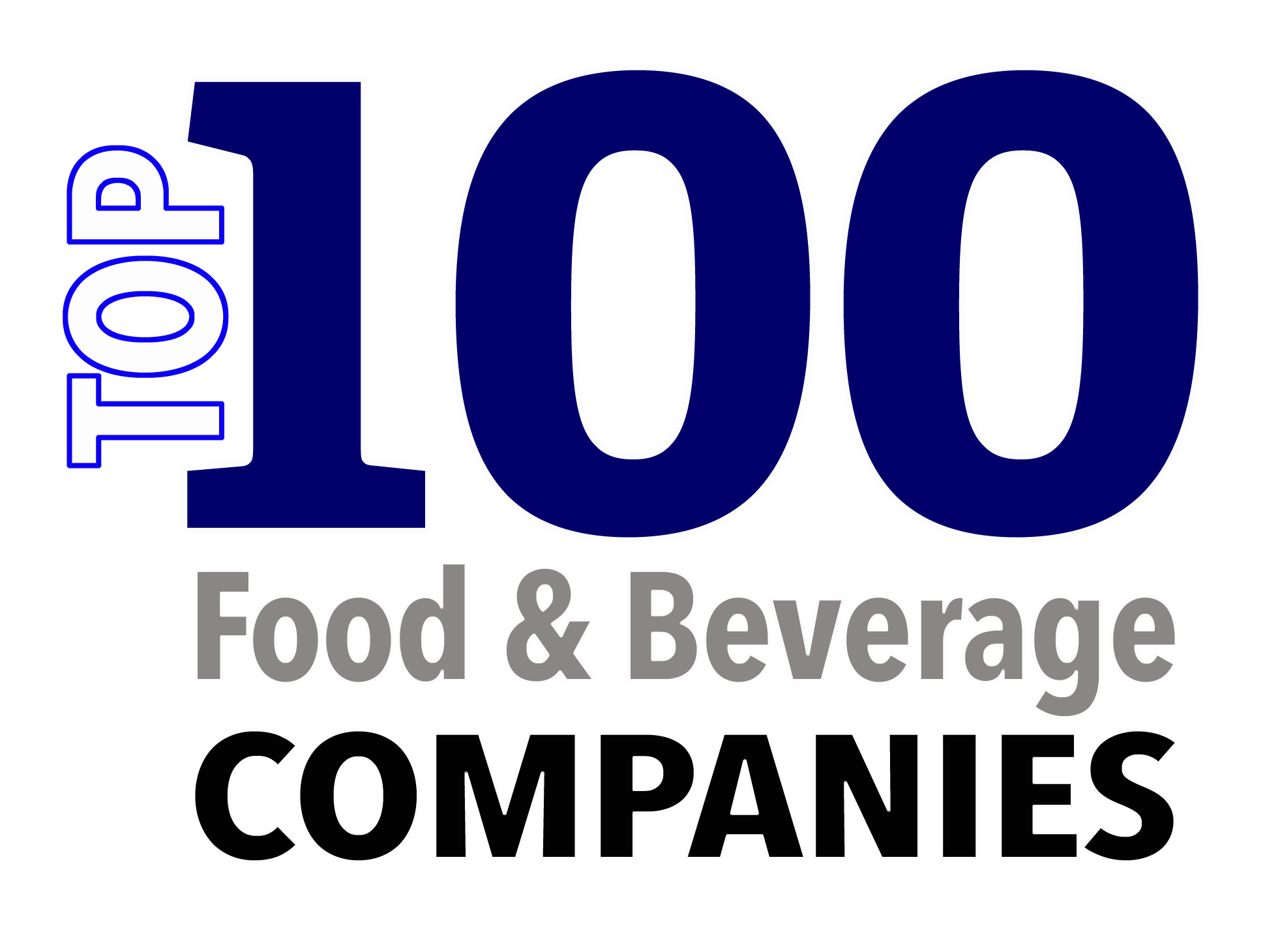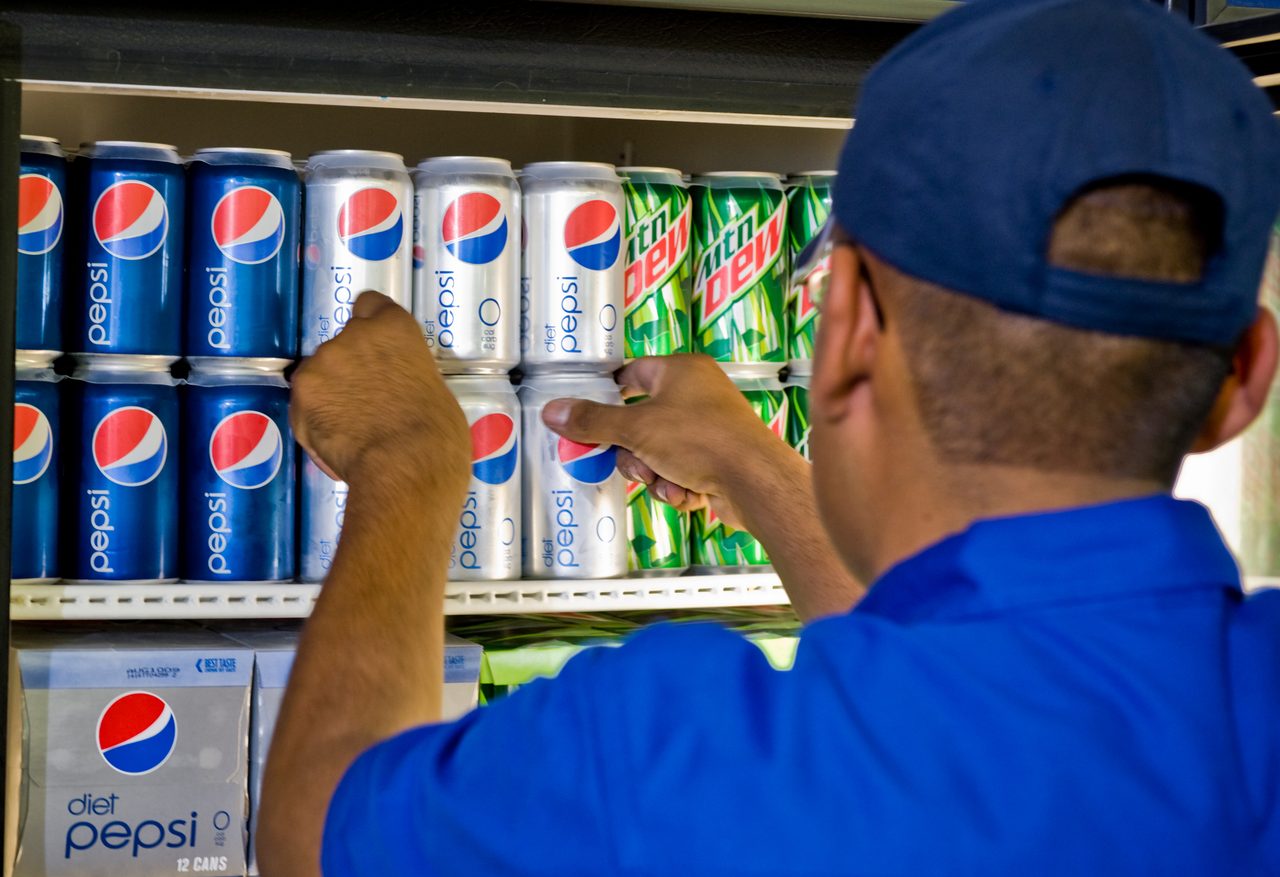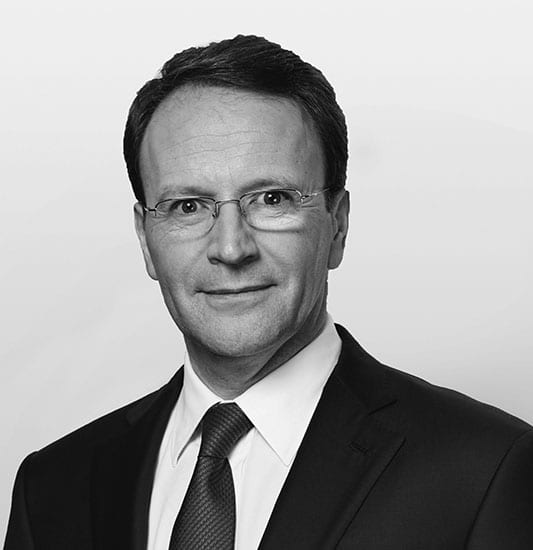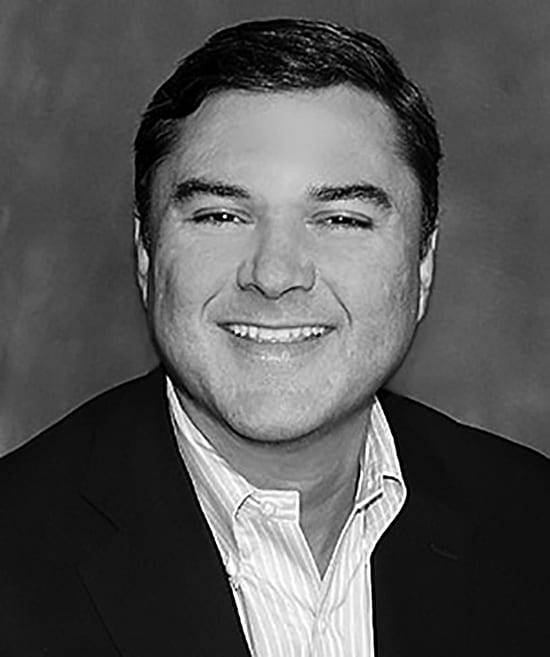
PepsiCo takes over top spot, Top 10 sees a reshuffling

SPONSORED BY
A volatile year for food and beverage companies of every size has seen a reshuffling of Food Engineering’s Top 100 food and beverage companies.
The most notable change is at the top, where PepsiCo claimed the No. 1 ranking from Nestlé. PepsiCo saw its food revenue increase from about $67.2 billion in 2019 to about $70.4 billion. Nestlé saw its food revenue decline from $76.8 billion in 2019 to $67.7 billion in 2020.
Nestlé made a number of moves in its food divisions in 2020, including completing its divestment of its U.S. ice cream business to Froneri; selling its 60% stake in Herta to create a joint venture with Casa Tarradellas; and selling its Yinlu peanut milk and canned rice porridge business.
PepsiCo saw substantial growth in both its global snacks and foods and global beverages markets, as well as growth in international markets, both those that are developed and those that are underdeveloped.
“I am proud that we were able to achieve these results whilst: 1) staying focused on the issues that matter most to society, and 2) continuing to invest in the business to increase capacity, build better systems and drive better ways to run our supply chain—capabilities aimed not only at accelerating our long-term growth, but also creating smiles for our many stakeholders,” says PepsiCo Chairman and CEO Ramon L. Laguarta.
While the headline is the change at the top, 2020 was a year that sent shockwaves through food and beverage companies throughout the Top 100—and beyond. Supply chain challenges, surges in consumer demand, drop-offs in foodservice demand and worker safety concerns shaped the industry as a whole—and the effects are still being seen today. Here’s a closer look at the 2021 Food Engineering Top 100 food and beverage companies and how 2020 affected the industry.
Casey Laughman, Editor-in-Chief
Intro video courtesy of Getty Images / JohnFScott

After several years at No. 2, PepsiCo took over the top spot in the Top 100 ranking. Photos courtesy of PepsiCo.
The Top 10
The change at the top wasn’t the only movement in this year’s top 10. Four other companies moved within the top 10 as well. JBS and Anheuser-Busch InBev switched places, with JBS moving up one spot to No. 3 and AB InBev moving down to No. 4. Archer Daniels Midland Company moved up to No. 7 to replace the Coca-Cola Company, which moved to No. 8.
AB InBev was heavily impacted by the COVID-19 pandemic, with volumes decreasing by 5.7% and revenue declining 3.7%. But a bright spot for the company was beer growth rebounding in the second half of 2020, as consumers purchased beer through both retail and e-commerce channels. AB InBev’s BEES B2B platform and its Zé Delivery platform for consumers both performed well, with BEES seeing two-thirds of its revenue in the 4th quarter of the year.
“We are now more closely connected than ever to the 6 million+ customers and 2 billion+ consumers we serve worldwide through our clear commercial strategy, our revamped innovation process, digital platforms and our ongoing operational excellence,” says AB InBev CEO Carlos Brito.
As for JBS, the company saw strong growth across its divisions, with revenue for its Pilgrim’s Pride brand increasing by 38.3% and JBS USA Pork growing by 37.1%. Overall, the company saw revenue increase by 32.1%, as consumers stocked up on its protein products for meals at home during a time when dining out was, at best, a limited option.
“Our business model of diversification in both our portfolio and geographic presence in 13 countries, turned out to be the right strategic choice,” says JBS CEO Gilberto Tomazoni. “We showed agility and flexibility in adapting to new consumer habits.”
Archer Daniels Midland saw its food revenue grow by about $2.5 billion, to almost $35.4 billion. The company’s food revenue is about 55% of its total revenue; the only company in the top 10 with a smaller percentage of food revenue is No. 9 Cargill, for which food makes up about 28% of its revenue.
Coca-Cola saw its revenue decrease, from about $37 billion to about $34 billion. The company streamlined its portfolio and saw strong growth in the second half of the year, especially among its flagship Coca-Cola brand, its fairlife milk brand and some of its bottled water brands.
In his annual letter to shareholders, chairman and CEO James Quincey summed up what the food and beverage industry has faced over the last year-and-a-half.
“Historians of the future will decide how the events of 2020 reshaped the world,” Quincey wrote. “I already know this—the year of the pandemic has changed our business and our industry in ways that will endure. We’ve learned much in the last year, and it will help us continue to change for the better.”
Key leadership:
Ramon L Laguarta, Chairman and CEO
Hugh Johnston, Vice Chairman and CFO
Jim Andrew, Executive VP Beyond the Bottle and Chief Sustainability Officer
Anne Fink, President, Global Foodservice
Tina Bigalke, Global Chief Diversity and Engagement Officer
PepsiCo has moved up from #2 to take the top spot. The company reported a 20.5% increase in net revenue in its Q2 results, raising its full-year guidance for organic revenue growth. It posted net revenues of $19.22 billion, compared with the $15.95 billion recorded for the same period last year. The easing of Covid-19-related restrictions and closures helped boost net revenue for PepsiCo’s foodservice business and drive up beverage sales.
The company announced that it was moving away from the fruit juice sector, offloading certain juice assets to private equity firm PAI Partners for $3.3 billion. “This joint venture with PAI enables us to realize significant upfront value, whilst providing the focus and resources necessary to drive additional long-term growth for these beloved brands,” said PepsiCo Chairman and CEO Ramon Laguarta.
Earlier this year, PepsiCo added Soulboost sparkling water to its functional beverage portfolio; and introduced Lifewtr Immune Support across the US, marking the first product extension for the bottled water brand since its inception in 2017. Meanwhile, the company launched a new brand—Neon Zebra canned cocktail mixers—as well as a cocktail mixer line called Unmuddled. The company revealed its commitments to achieve net-zero greenhouse gas emissions by 2040; reduce sugar levels in sodas by 25%; and launch healthier snacks in the EU by 2025.
Year end:
December 2020
Currency: USD
Total sales, local currency: 70,372
Food sales, local currency: 70,372
Total sales, $m: 70,372
Food sales, $m: 70,372
Ranking (last five years):
2021: 1
2020: 2
2019: 2
2018: 2
2017: 2

1. Pepsico
Infrastructure investments
The past two winners of Food Engineering’s Plant of the Year award—Keurig Dr Pepper and The JM Smucker Company—came in at Nos. 34 ($11.6 billion) and 54 ($8 billion) respectively. Both companies have spent significant amounts of money on new plants and other infrastructure investments over the past few years, with construction continuing even during the pandemic.
Keurig Dr Pepper saw a 4.5% increase in sales across its portfolio of more than 125 brands, which includes Snapple, Green Mountain Coffee Roasters and Mott’s in addition to its namesake brands. Leading the way was the company’s packaged beverages division, which saw a sales increase of 8.5%. The company also saw 3 million new households join its Keurig userbase, bringing it up to about 57% of American households in total.
Keurig Dr Pepper also took significant steps to advance its sustainability efforts, making all of its K-Cup pods recyclable, as well as converting its Core Hydration water bottles and 100% recycled PET plastic and undertaking the same goal for its 16-ounce Snapple bottles.
In addition, says chairman and CEO Bob Gamgort, “We stepped up our commitment to eliminate packaging waste and are the proud co-founders of two industry coalitions investing to advance a circular economy.”
The JM Smucker Company was seeing huge demand for its Uncrustables line even before the pandemic hit, and opened up a production facility in Longmont, Colo. in 2020 to meet the growth in the market. The company saw double-digit growth in each quarter for the frozen sandwiches, and saw revenue increase overall as well. The company’s pet food brands were also strong performers, as its Meow Mix and Milk-Bone brands continued to grow.
Key leadership:
Mark Schneider, CEO
François-Xavier Roger, CFO
Laurent Freixe, Zone AMS: Americas
Chris Johnson, Zone AOA: Asia, Oceania and sub-Saharan Africa
Marco Settembri, Zone EMENA: Europe, Middle East, North Africa
Following closely behind PepsiCo, Nestlé reported organic sales growth of 8.1% for its first half, after its results were boosted by strong demand for its coffee products. Following a strong performance in the first six months of the year, the Swiss food giant raised its full-year organic sales growth guidance to 5-6%.
Nestlé acquired various vitamin and supplement brands of The Bountiful Company from investment firm KKR for $5.75 billion, as it looked to expand its health and nutrition portfolio. Nestlé USA bought Essentia Water, a functional water brand that uses a proprietary process to ionize water, delivering a pH of 9.5 or higher. Meanwhile, Nestlé Waters North America began operating under the name BlueTriton Brands, following the completion of its acquisition by One Rock Capital Partners for $4.3 billion.
Nestlé made numerous investments, including: $70 million in its Burlington, Wis., factory to produce Nestlé Toll House refrigerated cookie dough; $100 million in a frozen foods factory in South Carolina; and a new $220 million dairy plant in Central Java, Indonesia. Nestlé also launched a range of snacks, including a vegan variant of its KitKat in the U.K. It also launched a new pea-based milk alternative brand in Europe called Wunda.
At the end of 2020, Nestlé said it would invest $3.58 billion over the next five years, in order to halve its carbon emissions by 2030 and achieve net zero by 2050.
Year end:
December 2020
Currency: CHF
Total sales, local currency: 84,343
Food sales, local currency: 72,183
Total sales, $m: 79,114
Food sales, $m: 67,708
Ranking (last five years):
2021: 2
2020: 1
2019: 1
2018: 1
2017: 1

2. Nestlé
The growth of dairy
There were several categories that performed well in this year’s rankings, including dairy. In addition to fairlife showing a strong performance for Coca-Cola, both Lactalis (No. 15, $22.8 billion) and Dairy Farmers of America (No. 21, $17.8 billion) saw significant growth in revenue.
Lactalis is the largest dairy products company in the world, with brands such as Parmalat and Stoneyfield Farm in its portfolio. The company’s revenue increased by about $2 billion compared to the prior year.
Dairy Farmers of America completed its acquisition of much of Dean Foods, which helped the company see growth despite a significant decline in milk prices in the United States. The company also saw about $2 billion in revenue growth.
Key leadership:
Andre Nogueira, CEO, JBS Foods
Denilson Molina, CFO, JBS Foods
Fabio Sandri, CEO Pilgrim's
Kevin Arquit, Chief Legal Officer, JBS Foods
Shannon Grassl, President, JBS USA Regional Beef
JBS reported its “best quarter in its history” in August, citing a net income that increased almost 30% to $839.2 million. The meatpacking giant claims its results were boosted by its meat business in the US and resilience in the Brazilian market.
The company’s most recent acquisition was for Australian salmon farmer Huon Aquaculture, for approx. $313 million. JBS Australia CEO, Brent Eastwood, said: “Our acquisition of Huon enables us to further grow our Australian protein business and strengthen our presence with consumers and customers.” Elsewhere, the meat manufacturer purchased European plant-based meat producer Vivera for approx. €341 million. It also announced its proposal to acquire the remaining common shares in Pilgrim’s Pride, in order to delist the company.
JBS suffered some controversial headlines. Most notably, its parent company J&F Investimentos pleaded guilty to US foreign bribery charges, agreeing to pay $128.3 million to settle the case. JBS also paid $11 million in ransom to resolve a cyberattack that temporarily shut down its meat processing operations in North America and Australia.
That said, JBS committed to achieving net-zero greenhouse gas emissions by 2040, supported by an investment of more than $1 billion over the next decade. In September 2020, it also unveiled its Together for the Amazon program, a series of long-term initiatives to promote conservation and sustainable development in the Amazon biome.
Ranking (last five years):
2021: 3
2020: 4
2019: 4
2018: 4
2017: 5
Year end:
December 2020
Currency: BRL
Total sales, local currency: 204,524
Food sales, local currency:192,250
Total sales, $m: 51,910
Food sales, $m: 48,795

3. JBS
Energy drinks trend upward
Energy drinks were another category of significant growth for companies on the Top 100. Red Bull (No. 64, $7.2 billion) saw sales grow by almost 6%, and moved up five spots in the rankings.
Monster Beverage Corporation, which made its debut on the Top 100 last year, moved up six spots to No. 87, with revenue of almost $4.6 billion. The company reported growth for the 28th year in a row. Its flagship Monster Energy brand is now sold in 141 countries and territories, but chairman and co-CEO Rodney Sacks says the company is not content to rely only on its main product for future growth.
“In 2020, we launched a number of new beverages in the United States, as well as in our international markets,” says Sacks. “Despite the COVID-19 pandemic during 2020, we have been able to accelerate our innovation pipeline and plan on launching new and exciting beverages during 2021.”
Key leadership:
Michel Doukeris, CEO
Fernando Tennenbaum, CFO
Jan Craps, Zone President, APAC
Brendan Whitworth, Zone President, North America
Carlos Eduardo Lisboa, Zone President, Middle Americas
AB InBev reported a strong performance in Q2 after organic revenue grew by 27.6% to $13.53 billion. Despite the ongoing Covid-19 pandemic, the company delivered revenue growth of 3.2% versus the same quarter in 2019. Its ‘Beyond Beer’ business continued to rise, with revenue growth of 45%, delivering an average gross profit per hl that is 20% higher than the firm’s traditional beer business. Carlos Brito stepped down as CEO after 15 years at the helm, succeeded by North America zone president Michel Doukeris.
The company sold a 49.9% stake in its US-based metal container plants to an Apollo Global Management-led group for approx. $3 billion, which it claimed aligns with its deleveraging commitments by generating proceeds to repay debt. In April 2021, the company’s ZX Ventures announced a new R&D partnership with Clara Foods, focusing on unlocking the potential of precision fermentation at a large scale. It also announced an investment in RTD cocktail company Canteen Spirits.
In terms of new product launches, AB InBev expanded its Bud Light Seltzer offering with new variety packs; and launched its canned Bud Light Seltzer Lemonade, as well as a spicy version of Bud Light Chelada. At the end of 2020, AB InBev also began testing a new program in Europe using blockchain technology to provide its beer consumers with an end-to-end view of its barley supply chain. The new pilot aimed to give full transparency and traceability in its supply chain of barley, from the consumer back to the farm.
Ranking (last five years):
2021: 4
2020: 3
2019: 3
2018: 3
2017: 3
Year end:
December 2020
Currency: USD
Total sales, local currency: 46,881
Food sales, local currency: 46,881
Total sales, $m: 46,881
Food sales, $m: 46,881

4. Anheuser-Busch InBev
Other highlights
Some other highlights of the 2021 Food Engineering Top 100 list include:
—14 companies did not change places in the ranking, including four of the Top 10 (No. 5 Tyson, $43.2 billion; No. 6 Mars, $37 billion; No. 9 Cargill, $32.3 billion; and No. 10 Danone, $26.9 billion); Lamb Weston (No. 100, $3.8 billion) also did not change.
—The largest riser was Nisshin Seifun Group (No. 72, $6.35 billion), which moved up 15 spots; Barilla (No. 89, $4.35 billion) and ConAgra (No. 36, $11.2 billion) were the only other companies to move up at least 10 spots, with both moving up exactly 10.
—The largest faller was Molson Coors Brewing Company (No. 51, $8.2 billion), which fell 12 spots; Coca-Cola Bottlers Japan (No. 63, $7.4 billion) fell 11 spots.
—The top 5 companies all surpassed $40 billion in revenue; the top 18 all surpassed $20 billion; and the top 39 all surpassed $10 billion.
—75 of the Top 100 bring in all of their revenue from food and beverage; 8 companies have at least $10 billion in non-food revenue.
Key leadership:
Donnie King, President and CEO
Stewart F Glendinning, Executive VP and CFO
David Bray, Group President, Poultry
Chris Langholz, President, International Business
Noelle O'Mara, Group President, Prepared Foods
Tyson Foods recorded sales of $11.30 billion in Q2, an increase from 2020’s results of $10.89 billion. Demand for beef and prepared foods propelled these results. In June 2021, Tyson COO Donnie King succeeded Dean Banks as president and CEO, as Banks stepped down from the company and board “for personal reasons”.
Tyson invested $48m to expand its poultry operations in Arkansas, creating 70 jobs and adding extra capacity to the plant’s fully cooked processing lines. This expansion is set to be completed by the end of 2021. The meatpacking giant inaugurated its new poultry complex in Tennessee, following an investment of $425 million. Elsewhere, Tyson invested $55 million in a prepackaged meat expansion project at its South Carolina facility.
Tyson made headlines at the start of 2021 after it agreed to pay $221.5 million to settle all class claims related to its previously disclosed broiler chicken antitrust litigation. The lawsuit was filed by a group of poultry buyers over accusations that the company had illegally conspired to inflate chicken prices.
For its sustainability efforts, Tyson Foods and Nestlé joined forces with supermarkets and scientists to launch a new nonprofit organization, Foundation Earth, to issue front-of-pack environmental scores on food products. The company also committed to achieving net-zero greenhouse gas emissions across its global operations and supply chain by 2050.
Ranking (last five years):
2021: 5
2020: 5
2019: 5
2018: 5
2017: 6
Year end:
October 2020
Currency: USD
Total sales, local currency: 43,185
Food sales, local currency: 43,185
Total sales, $m: 43,185
Food sales, $m: 43,185

5. Tyson Foods
The Food Engineering Top 100 Food and Beverage companies is compiled by an independent researcher based on the most up-to-date financial information possible. For companies that report results in currencies other than dollars, currency conversions are based on a 12-month average as reported on www.x-rates.com.
Top 100 Food & Beverage Companies
CRB is the exclusive sponsor of the Top 100 section. CRB had no editorial input and Food Engineering retains full ownership of and takes full responsibility for the content.
